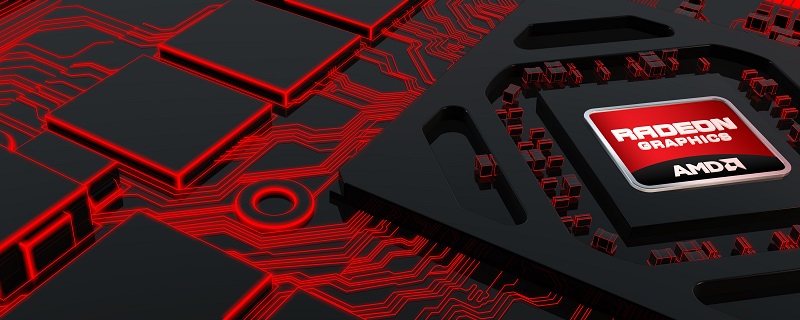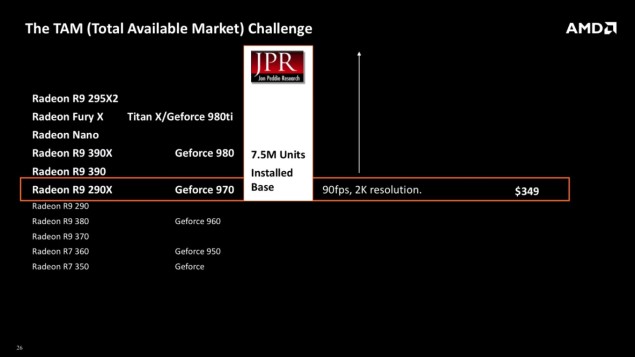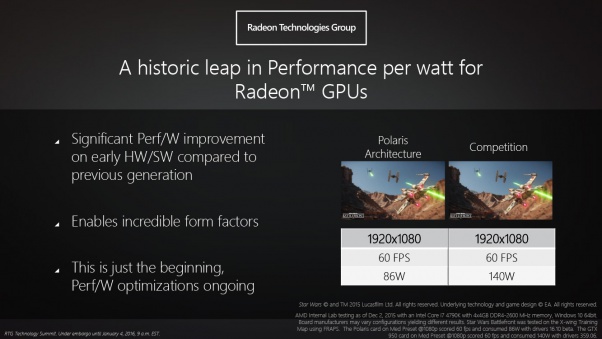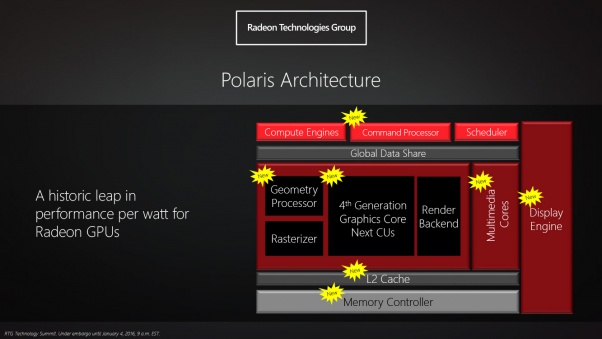AMD will make the “minimum VR spec” affordable with Polaris
AMD will make the “minimum VR spec” affordable with Polaris
Â
AMD have stated at VRLA that they will make the “minimum VR spec” affordable, faster and consume less power thanks to their upcoming Polaris Architecture.Â
Right now the minimum GPU spec for VR is listed as the GTX 970 and the R9 290, both of which cost around $350, which too expensive for a lot of consumers right now. AMD says with Polaris they will greatly decrease the price of “VR ready” GPUs, which they can create in larger volumes, consume less power and deliver more performance than the R9 390. Â Â Â
Roy Taylor, AMD’s Corporate Vice President Alliances, Technology and VR had this to say at VRLA.Â
Â
Now I would like to address a different challenge for us – and that is what is called a Total Available Market. One of the issues we have is the minimum spec for the PCs which will run the Occulus and the HTC headset ant 90 fps and 2k resolution. Now to do that you need either a Radeon 290x or the GTX 970 both of which retail for $349. The challenge that we have is if you look at the total numbers of these GPUs that have been sold, according to JPR, that’s an install base of just 7.5 Million units. Now that’s an issue because it means you can only sell 7.5 Million of anything – because that’s the number that can run those headsets. I am very pleased to tell you that we have invented something called Polaris which we think will address this problem.Â
AMD has just completed the shrink to 14 nanometer [with Polaris Architecture]. What this means is, and this is where it comes home to everyone in this room, is that we can produce GPUs that will run the minimum spec of VR at a lower cost, in larger volume, consuming less power and running faster. That means in the second half of this year and going forward more people will be able to run those headsets which will make a larger for everybody in the room [VR Industry]
Â
Â
If there is one thing that AMD say that their upcoming Polaris GPUs will be very Efficient, both coming from a lot of architecture changes in GCN 4.0 and the new 14nm FinFET Process.
Staff from the Radeon Technology Group did admit that the bulk of the efficiency improvements that we will see with AMD’s upcoming Polaris GPUs will come from the so-called “FinFET Advantage”, with PCPER stating that it is “on the order of a 70/30 split”, with 70% of the efficiency improvements coming from the use of FinFET transistors and 30% from architectural advancements.Â
These efficiency advantages gained from the 14nm FinFET processing node will also be coming to Nvidia’s upcoming Pascal products, though at this time we simply have no idea whether or not the TSMC 16nm FinFET process will give them the same gains as they are different processing nodes from different manufacturers.Â
Â
Â
In terms of architecture improvements the new Polaris, GCN 4.0, architecture will feature a newly designed command processor, a dedicated multimedia section, a new display engine, updated geometry processors and a updated memory controller and new and improved set of L2 cache, all of which will be instrumental in giving AMD more performance in this upcoming generation of GPUs.
The new command processor will likely help AMD with Asynchronous and serial computing tasks, especially with the new DirectX 12 API, promising that the GPU will never be sitting at idle for too long and the new memory controller will no doubt help AMD make the most out of every bit of available memory bandwidth that they can get their hands on with HBM 2.0, though we do still expect to see some GDDR5 in the lower end of AMD’s lineup. Â
AMD has also stated that they have “uplifted the frequency of the product”, meaning that AMD’s upcoming GPUs will be able to run at higher frequencies than before, so perhaps this will mean that AMD will enter an overclocking golden age or simply just have much better clock speeds out of the box. Perhaps 1250MHz or more on the GPU core.Â
Â
While talking to PCPER AMD’s Joe Macri stated that they expect FinFET to bring a 50-60% drop in power consumption for the same performance or a 25-30% performance boost with the same power consumption, which are both very large numbers to consider.Â
With such a large reduction in power consumption at the same level of GPU power AMD will see a drastic improvement in their performance per watt, especially for their mobile products.Â
Remember that this was talking about FinFETs alone, so hopefully AMD’s architectural improvements will allow AMD to deliver an even greater increase in GPU performance.Â
This year is going to be a very big year for GPUs, with AMD and Nvidia making large architectural changes in their GPUs and moving to a much smaller and more efficient manufacturing process, which in itself will deliver great performance and power consumption improvements. Â
Hopefully AMD and Nvidia will price these new products competitively, allowing consumers at even the lower end of the market to be able to access VR grade levels of GPU performance.Â
Â
You can join the discussion on AMD’s Polaris GPUs and VR on the OC3D Forums.Â
Â
AMD say that they will make the “minimum VR spec” more affordable with Polaris.https://t.co/vKRPUCU7uV pic.twitter.com/vBF7dhSGuL
— OC3D (@OC3D) February 12, 2016






